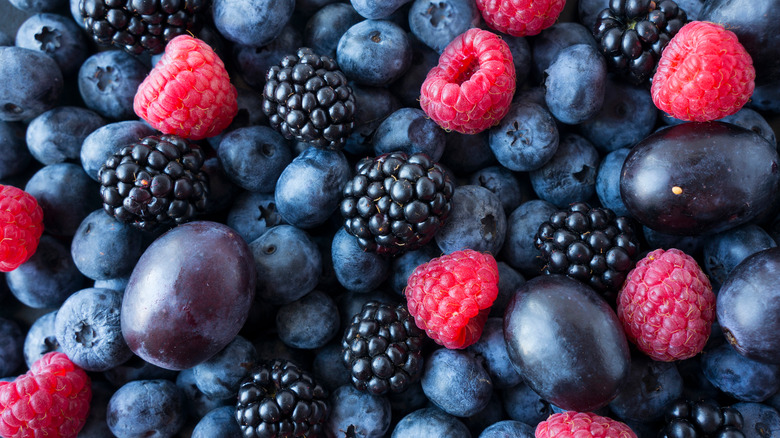The Best Type Of Fruit To Use For A Flag Cake This 4th Of July
Every year around the 4th of July, pictures of gorgeous flag cakes fill our social media feeds. Decorated with berries to emulate the stars and stripes of the American flag, these sheet cakes are as much about visual impact as they are flavor.
The flag cake has a long and storied history, with both Ina Garten and Martha Stewart claiming to have made some of its earliest iterations, reports Food52. However, as cookbook author Anne Byrn explained to the site, the cake in its current form dates back to the 1950s (though there were other types of patriotic cakes prior to then). While the flag cake's exact history remains unknown, it was likely created or popularized by companies in an effort to sell products like flour, cake mixes, or berries.
Today, countless have adopted the flag cake tradition. However, if you're trying out the dessert for the first time this year, there are some important guidelines to consider. Though some aspects of the flag cake are customizable (such as the variety of cake), there are certain elements — like the type of fruit you use — that are essential to pulling off the dessert.
What kind of fruit is best for a 4th of July flag cake?
Generally speaking, American flag cakes feature a white frosting base, blueberries to represent the flag's starry area, and either raspberries or sliced strawberries to create its stripes. However, the type of berry you use can make a huge difference. According to The Spruce Eats, you'll only want to use fresh berries to top your flag cake. While using frozen berries may be tempting, their juices are bound to run, making a mess and muddling the colors on your cake.
There is a reason why fresh and frozen fruits result in different outcomes when used as cake toppings. According to King Arthur Baking, when fruit is frozen, the water inside of it expands as it turns into ice. This expansion breaks down the fruit's cell structure, meaning that once defrosted, the fruit will be much softer than it was fresh. As a result, thawed, broken-down berries are more likely to have juices that run, compared to their fresh counterparts.

